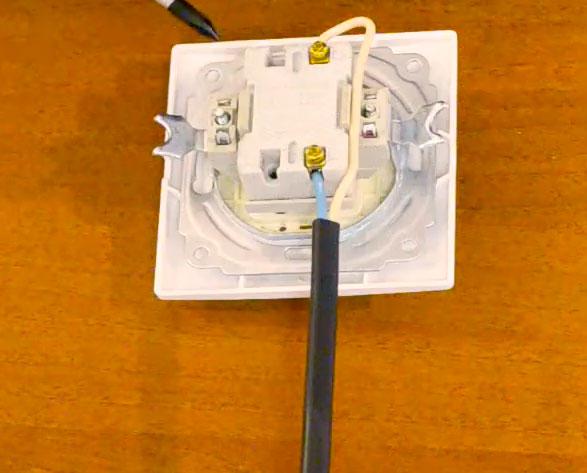How the light switch works in the apartment
The household light switch was invented back in the 19th century and did not undergo any fundamental changes for the first almost a hundred years - only a slight change in design. Only in the last few decades has there been a rapid development of electrical engineering in this segment, and now the consumer can choose different devices in terms of performance and purpose.
How the one-way switch works
Household single-switch switch is a familiar element of the environment.
Its main parts are:
- base with fastening elements;
- movable panel;
- contact group with moving and fixed contacts;
- decorative elements (usually made of plastic).

The principle of operation of any switch is similar - when exposed to open and close the electrical circuit. But different devices do it in different ways, depending on the features of the device and functionality.
Design variants
Light switches are available in different degrees of protection (IPxx, where xx are two numbers indicating the level of protection against solid objects and particles and against water). Depending on the degree of protection, the area of application is determined. For example, switches with IP 21 are used only indoors, while switches with IP 44 or 54 can also be mounted outdoors.

There are also switches for surface mounting and built-in type. The former are mounted on the pad and used in conjunction with exposed wiring. The latter are mounted in a recess in the wall, which is built into the socket. This installation is used with concealed wiring and is more aesthetic. The probability of mechanical damage to the devices is less, but the labor intensity of work on the arrangement is much higher.
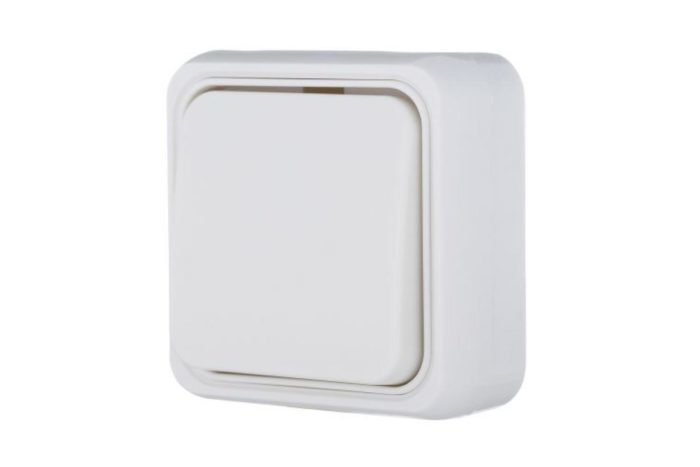
Also switches differ in the rated load (current or power), which can switch the device. The value indicated on the housing or on the data sheet must not be exceeded.
| Type of switch | Type of device | Switch Capacity, А |
| MAKEL Mimoza 12003 | Two-key switch | 10 |
| Simon S27 | Push-button | 10 |
| Jilion 9533140 | Two-key plunger | 10 |
| Bylectrica Pralesca | Three-key switch | 6 |
| Schneider Electric GSL000171 GLOSSA | Crossing | 10 |
Design and operation of a light switch
Many switches are now equipped with a backlight circuit. It performs several functions:
- Allows you to locate the switch in the dark;
- Serves as an indicator of the switched off state of the switching device;
- in some cases, the glow indicates the integrity of the lighting circuit (and in the case of incandescent bulbs, the bulb serviceability).
The light circuit is assembled on a device which requires a very small current of a few milliamps to illuminate. LEDs or miniature neon lights are suitable for use in such conditions.

The circuit diagram shows that when the main switching device is switched off, a current is passed through the LED, which is limited by a resistor and the resistance of the luminaire. If the switch is closed, the backlight circuit is bypassed and the LED does not light up. If you turn off the lamp, there is also no glow - the circuit is broken.
In the era when incandescent lamps dominated, the backlight circuit had no effect on circuit operation. When energy-saving and LED lights became widespread, even the extremely small current flowing through the resistor and LED in some cases causes unpleasant flashing of the lamps. To combat this phenomenon, it is necessary to shunt the luminaire with a resistor of several kilohms or a capacitor.
Terminals for connecting wires
There are two basic types of terminals for connecting wires to the switchgear:
- screw - The conductor core is clamped by tightening the screws;
- clamping (spring-loaded) - just insert the conductor, the spring-loaded pad will clamp it by itself.
Spring-loaded terminals are more convenient, installation is faster. But screw terminals are considered more reliable.

On the other hand, if the wiring is performed by a cable with aluminum conductors, you should remember about the plasticity of this metal. Screw terminals require periodic tightening, otherwise bad contacts and related consequences cannot be avoided. Spring-loaded ones will tighten the wire themselves.
Markings on devices.
Sometimes you can see symbols on the front of the switch. They signify the scope of the appliance.

Conventional light switches equipped with keys may be marked I and O, which means on and off position.

Also conventional devices that only operate to close and open an electrical circuit may be marked with a key symbol.

Non-latching pushbuttons can be used as both bell buttons and as switches in a light system based on pulse relays. These devices are marked in the form of a bell (bell).

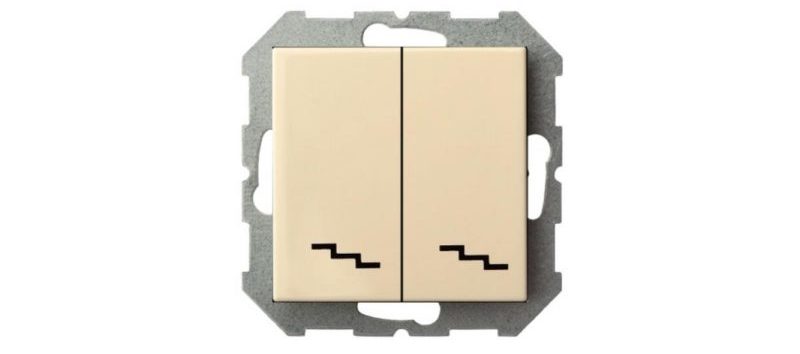
On devices stairway-type switches can be marked with symbols in the form of a bidirectional arrow or in the form of a flight of stairs.
Some manufacturers have keys with a place to insert the symbol. But in general, there is no uniform standard for marking devices, nor is there any obligation to put symbols on the front. Therefore, many manufacturers, both little-known and world leaders in the market of electrical engineering, often neglect the application of designations.
Design of Switches of Various Types
The purpose of any switching device is to turn lights on and off when acted upon. But the desired effect can vary depending on the design.
Pushbutton
This design is familiar to everyone. An ordinary switch, in one position the contacts are closed and the light is on, in another - open and the light is off. They are available in one-key, two-key and three-key versions.
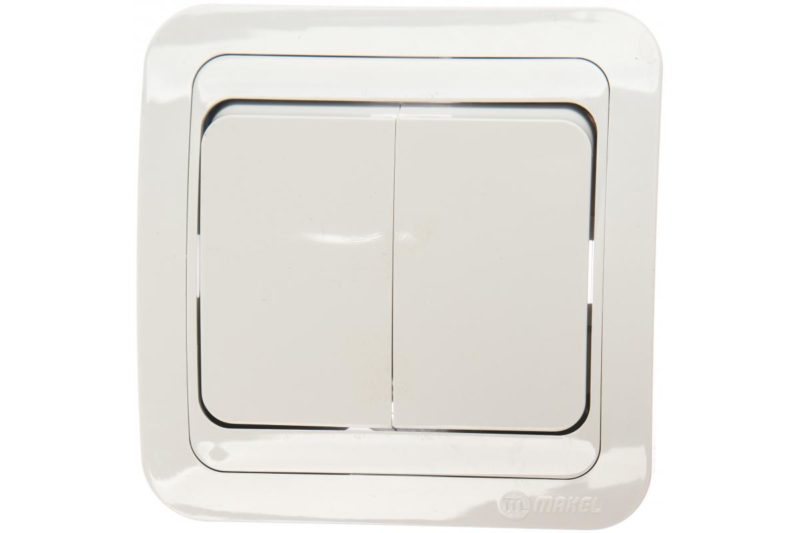
The device switch type key has not changed over the years - behind the decorative plastic parts hidden sliding panel that controls the contact group. All this is assembled on a supporting structure.
Push-button
The basis of such a switch is a button. There are two versions of such a device:
- With locking. It works in a similar way to the keypad. The first press locks the button in the on position. On the second press, it is pushed back to the off position.
- No detent.. Contacts are closed when pressed and open when released. Can be used for electric bells and for impulse relay circuits.
The first type of device is usually built into luminaires. The second is mounted on a vertical plane.
Corded (rope)
Rope-type switch ("twitch") is available both built into wall lights, and as an independent device to control lighting in the room. It is controlled by means of a cord that must be pulled.

Quite a complex mechanism works according to a simple algorithm - each manipulation of the rope changes the state of the contacts to the opposite:
- To turn the light on, you pull the cord once;
- To turn off - pull it a second time;
- switch on again - the third time and so on in a circle.
Such a switch can, with a certain degree of assumption, be called a mechanical implementation of an impulse relay. The contact group in most cases works in a make-or-break operation.
Rotary
Rotary switches make and break contacts by turning the handle. This is quite inconvenient, so such devices are now used rarely and only for design purposes.
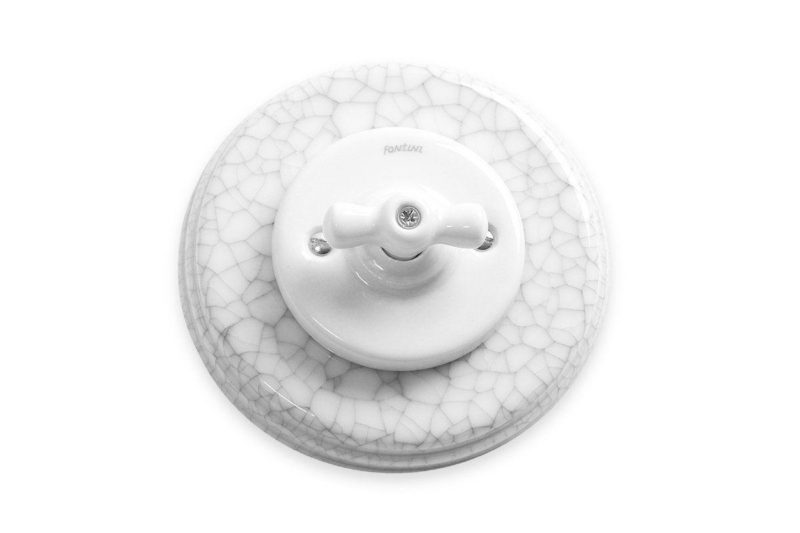
To this category we can also refer some types of modern switches, combined with dimmers (dimmers). In order to turn the knob off you should turn it to the minimum brightness and turn it until it locks. To turn it on, turn the knob in the opposite direction.

Acoustic
The acoustic switch responds to sound. The built-in microphone picks up sound and converts it into an electrical signal, which is then amplified, filtered, and compared to a set threshold.
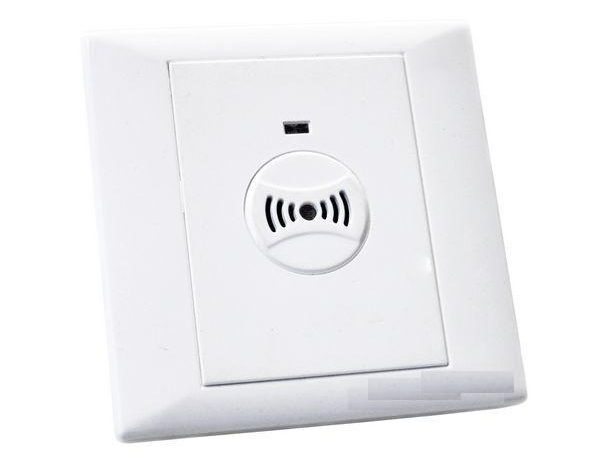
If the set level is exceeded, a command is formed to turn on or off the load. This kind of device Useful if there is a person with limited mobility in the apartment.. But the noise immunity of such devices leaves much to be desired - unauthorized triggers from extraneous noise are possible.
Sensor
The device of the touch light switch is different in that to turn on the light it is enough to touch the panel without making an effort to press. The main advantage - the ability to integrate additional functions, which is important when using in systems such as "smart home". In other cases it has more of an aesthetic function for decorating rooms in the style of Hi-Tech.
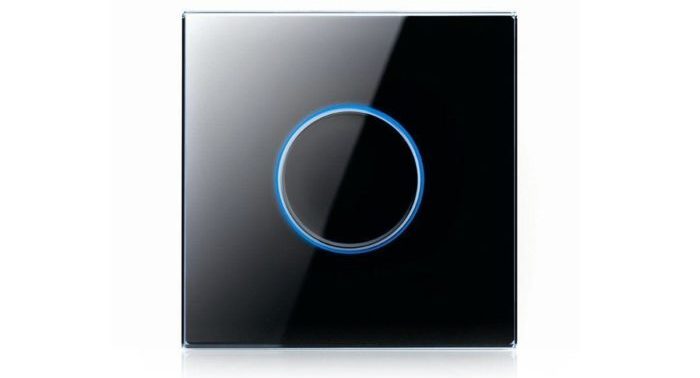
Functional distinction
Switches even of the same type and design can perform different functions. In most cases, this difference is determined by the design of the contact group, but not always.
Key
An ordinary household circuit breaker, the most common type. Depending on the number of keys, it controls the corresponding number of contact groups.

The contact pins on the power side are usually interconnected.
Button
The operating principle of a push-button switch differs only in the direction of action and, in some cases, in the lack of locking in the pressed position.

The functionality of the contacts is the same, but arranged slightly differently and is indicated by a different symbol in the diagram.
Pass-through .
This type of switches is more like a switch. It is equipped with a toggle contact group - in one position one pair of contacts is closed, in the other - the other. These devices are available in single- and double-button versions.

In appearance, it may not differ from the usual key (if there is no marking), but on the back side is usually stamped on its internal circuit. It comes in single or double versions.

These devices are used when it is necessary to organize independent control of lighting from two or more points.
Crossover .
With this switch, one button controls two flip-flop groups of contacts connected in a special way.

Such a device is used in conjunction with feed-throughs where it is necessary to control a load of three or more places.
Combined devices
To increase the comfort of light control in the apartment, office or industry, devices combining several functions have been created. You can, for example, buy:
- rotary switch with dimmer;
- Through-line switch with dimmer;
- other devices.
Devices based on microcontrollers have limitless possibilities for combining functions. Such switches are used in "Smart house" systems.
We recommend for reviewing.
On sale is available a variety of household light switches, varying in performance, functionality, appearance. With their help, you can organize a lighting system from simple to controllable from a smartphone. To do this, it is important to understand the possibilities and know the range of modern switching devices.
